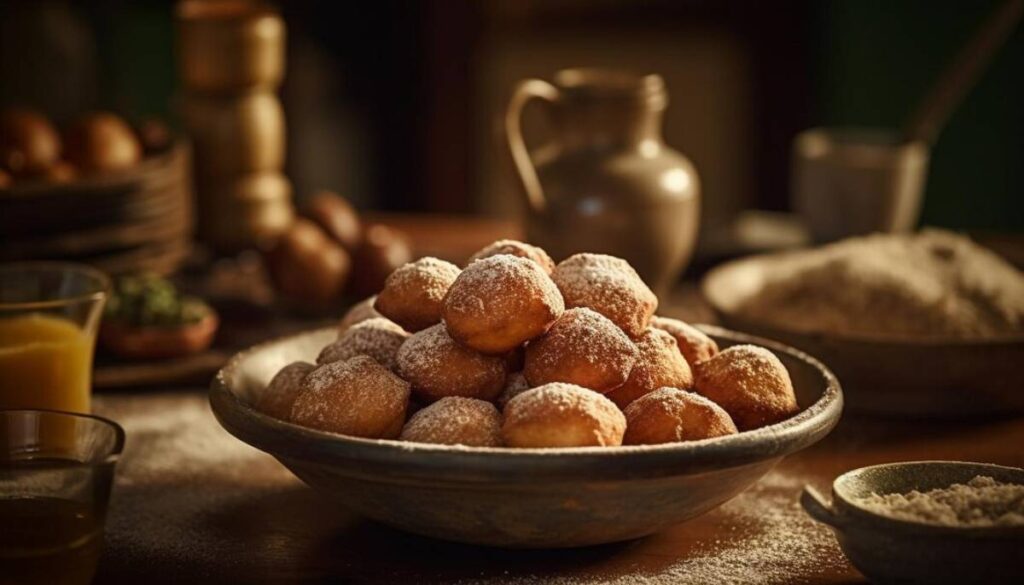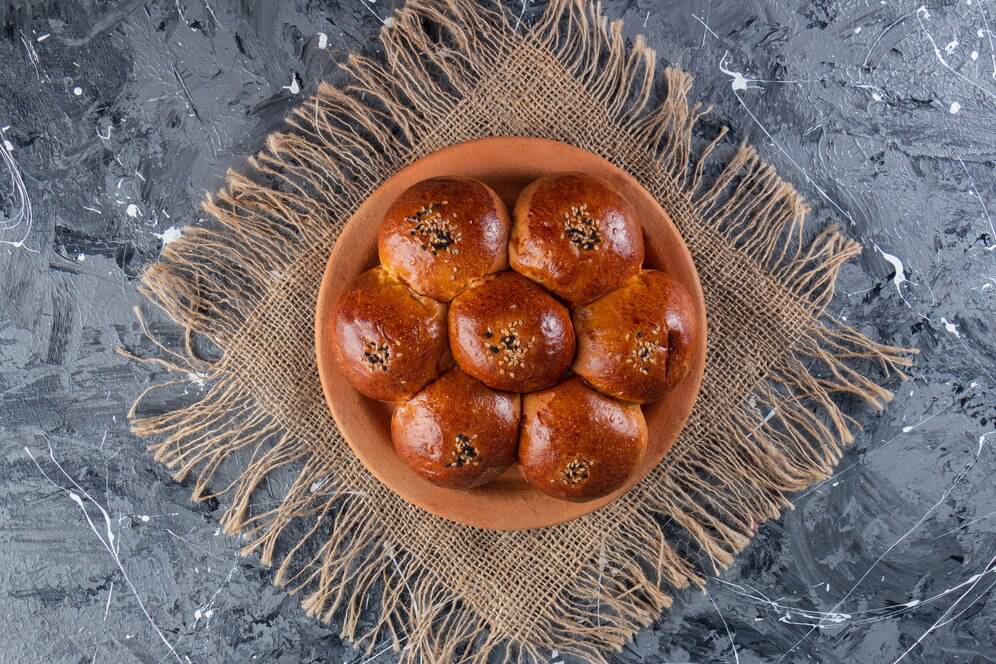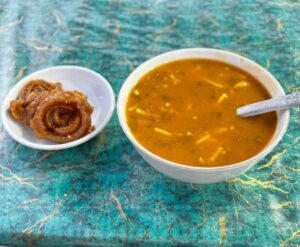The Food & Recipes Blog

Turkish Lokma: Deep-Fried Street Dough Balls
Golden, crisp, and glistening in syrup, Turkish lokma is not simply a dessert but a culturally symbolic food, a rich feature of Turkey’s gastronomy. Fried and found in street-side vats from Istanbul to Izmir, these little dough puffs are one of the country’s favourite warm, shareable sweets. For food lovers and travel enthusiasts, enjoying lokma dessert in Turkey presents an aspect of everyday Turkish life and hospitality unavailable by simply gazing through a car window or clattering through the streets on a tour bus.
In this blog, we will examine this special Turkish culinary delight with its historical aspect, cultural dimension, recipes, and modern-day renditions. Whether you’re a curious, hungry person or getting ready for your next trip to Turkey, this guide is everything you wanted to know about this iconic treat but didn’t know who to ask.
The History and Cultural Roots of Lokma
A Dessert Steeped in Tradition
Lokma comes from the Arabic word luqma, or “mouthful” — a name well-suited to these syrupy dough balls usually eaten in one gulp. You can find the roots of lokma in the Ottoman Empire, where they were served in ceremonies, religious observances, and acts of charity. Today, lokma is still made and shared at funerals and memorial celebrations in various Turkish communities as acts of reflection and altruism.
Historically, lokma was:
- Made by women in communities using shared outdoor stoves.
- Offered to neighbours and passers-by for free.
- Symbolic of generosity and communal harmony.
This tradition continues today in both rural towns and bustling cities across Turkey, especially during religious festivals like Ramazan (Ramadan).
What Exactly Is Lokma?
A Simple Yet Irresistible Recipe
At its core, Turkish lokma is made from a basic yeast dough that is deep-fried and then drenched in sugar syrup. What makes lokma special is the contrast of textures: a crispy outer shell and a soft, airy interior that absorbs the sweet syrup like a sponge.
Basic ingredients include:
- All-purpose flour
- Yeast
- Warm water
- A pinch of salt
- Simple syrup (sugar, water, lemon juice)
The dough is typically piped into hot oil using a spoon or a squeeze bag, then fried until golden. Once cooked, the balls are immediately submerged in cold syrup, creating that signature glossy finish.
Street Sweets: Lokma as a Cultural Experience
More Than Just a Snack
In Turkish cities, street sweets like lokma aren’t just about flavour but community, memory, and ritual. Lengthy queues often form around lokma stalls, where the dessert is freshly fried and served piping hot.
Reasons people love lokma on the streets:
- Affordable and accessible.
- Cooked fresh to order.
- Served during meaningful events like weddings or funerals.
Some vendors even set up mobile lokma stands, often funded by individuals or families as an act of religious devotion or to honour a deceased loved one.
Regional Variations of Turkish Lokma
From Izmir to Istanbul: Local Takes
While the basic recipe remains largely unchanged, lokma has regional twists that reflect local tastes and preferences.
- Izmir Lokma: Perhaps the most famous version, made with more petite dough balls and often distributed free of charge at public memorials.
- Saray Lokması (Palace Lokma): Larger and more decadent, sometimes with cream or nuts.
- Crispy Lokma: Found in western Turkey, these are left in the oil a little longer for added crunch.
Each variety showcases the diversity of lokma dessert in Turkey, appealing to different palates and preferences.
Making Lokma at Home
A Step-by-Step Guide
While tasting lokma on the streets of Turkey is a memorable experience, you can also enjoy them in your kitchen. Making lokma at home is surprisingly simple, though it requires some practice to get the texture right.
1. Prepare the Dough:
- Mix flour, yeast, and salt in a bowl.
- Slowly add warm water until a sticky dough forms.
- Let it rise for 1–1.5 hours until doubled in size.

2. Heat the Oil:
- Use a deep pan or fryer.
- Heat vegetable oil to approximately 180°C (350°F).
3. Shape and Fry:
- Use a spoon or piping bag to drop small amounts of dough into the hot oil.
- Fry until golden brown, turning occasionally.
4. Soak in Syrup:
- Immediately transfer to a bowl of cool sugar syrup.
- Let them sit for a few seconds to absorb the flavour.
Optional toppings:
- Cinnamon
- Crushed pistachios
- Melted chocolate
Top tip: Serve warm for the best texture and taste.
Lokma in the Modern Culinary Scene
From Street to Gourmet
Though lokma remains a popular Turkish fried dough street snack, it has also found a place in contemporary cuisine. Chefs and food entrepreneurs are reinventing lokma with:
- Innovative fillings: Nutella, custard, or clotted cream.
- Trendy toppings: Matcha powder, desiccated coconut, or edible gold.
- Fusion formats: Served on skewers or as part of dessert platters.
Instagram-friendly and highly photogenic, gourmet lokma appeals to younger audiences seeking a mix of tradition and novelty.
Lokma Beyond Turkey
A Global Sweet Treat
Thanks to the Turkish diaspora, lokma is gaining recognition outside Turkey, especially in European cities with large Turkish communities, such as Berlin, London, and Amsterdam. Lokma shops are becoming trendy dessert spots, often alongside other favourites like baklava and künefe.
Additionally, similar deep-fried dough desserts exist across cultures:
- Loukoumades (Greece): Often served with honey and cinnamon.
- Zalabia (Middle East): Usually smaller and sweeter.
- Zeppole (Italy): Sometimes filled with custard or ricotta.
This cross-cultural appeal underscores the universal love for deep-fried, syrup-drenched indulgence.
Nutritional Considerations
Treating Yourself in Moderation
While undeniably delicious, street sweets like lokma are best enjoyed in moderation. They’re high in sugar and fat, making them a treat rather than a staple.
Nutrition tip: Pair lokma with unsweetened tea or black coffee to balance the sweetness. Smaller portions and occasional indulgence allow you to enjoy lokma guilt-free.
More Than Just a Dessert

Lokma is a deep-fried Turkish sweet that’s good for the soul. Underneath its crispy skin and sugary insides is a deep cultural tradition that still unites communities. Whether shared with all at a public celebration or on a quiet evening walk, lokma embodies the essence of Turkish hospitality and culinary history.
So, next time you are in Turkey — or even close to a Turkish bakery — try the lokma dessert. It’s not just food; it’s an experience.
Are you curious about Turkish cuisine or planning a culinary trip? Explore our blog for more guides to traditional dishes, hidden food stalls, and cooking tips. Subscribe for updates and bring the taste of the streets to your home.









